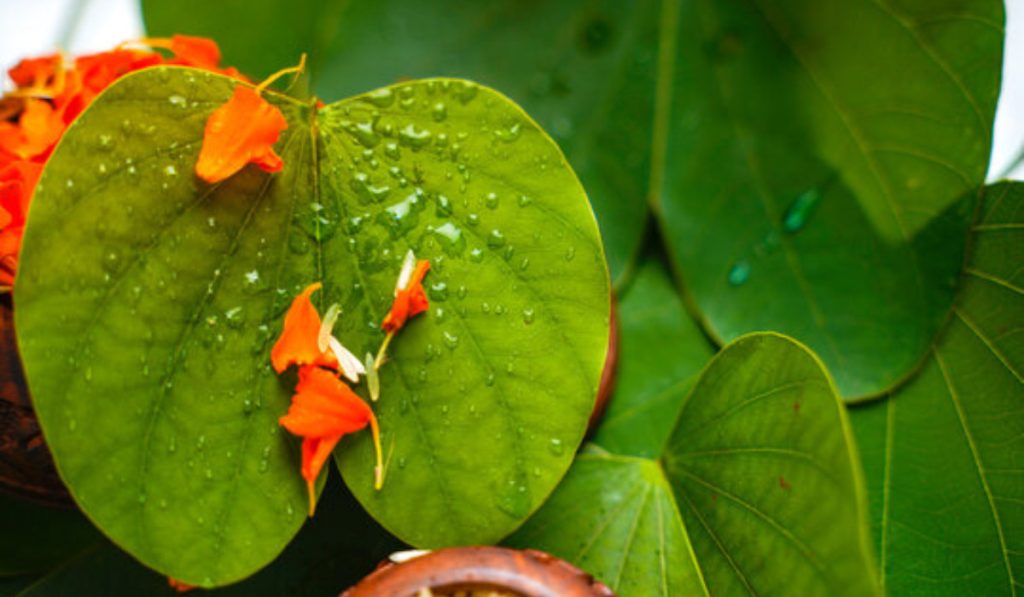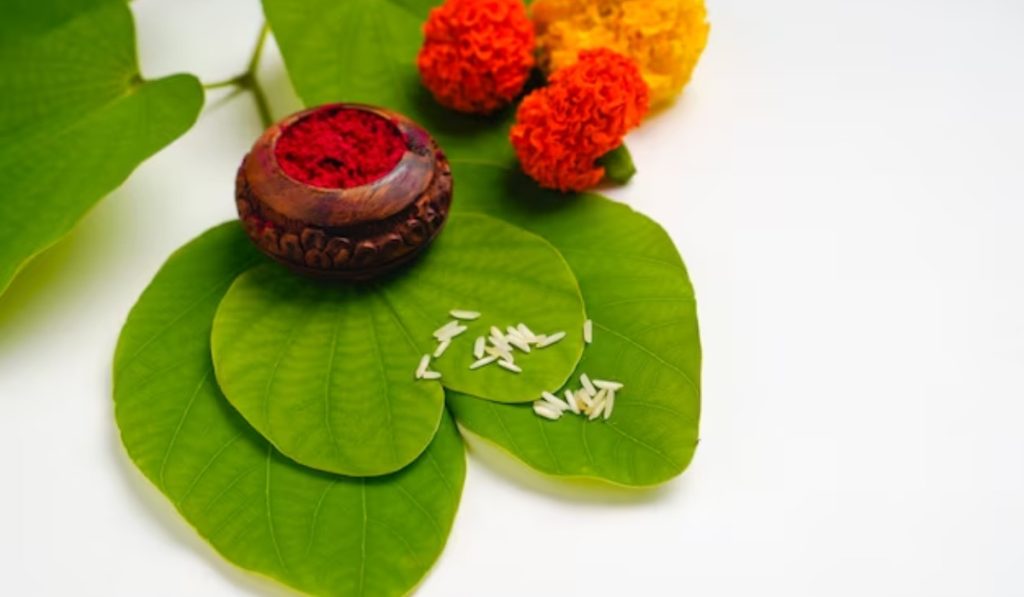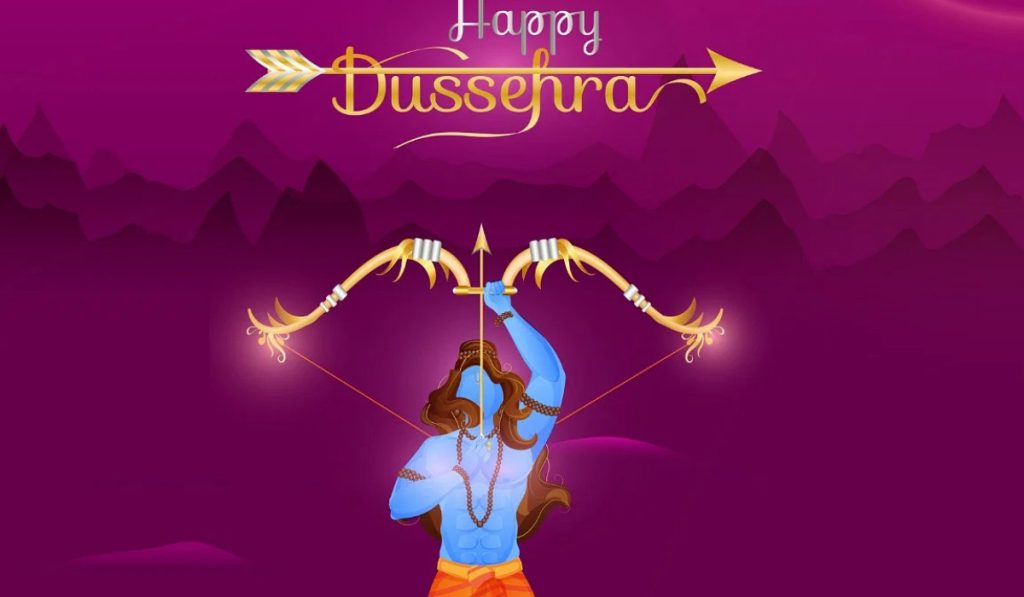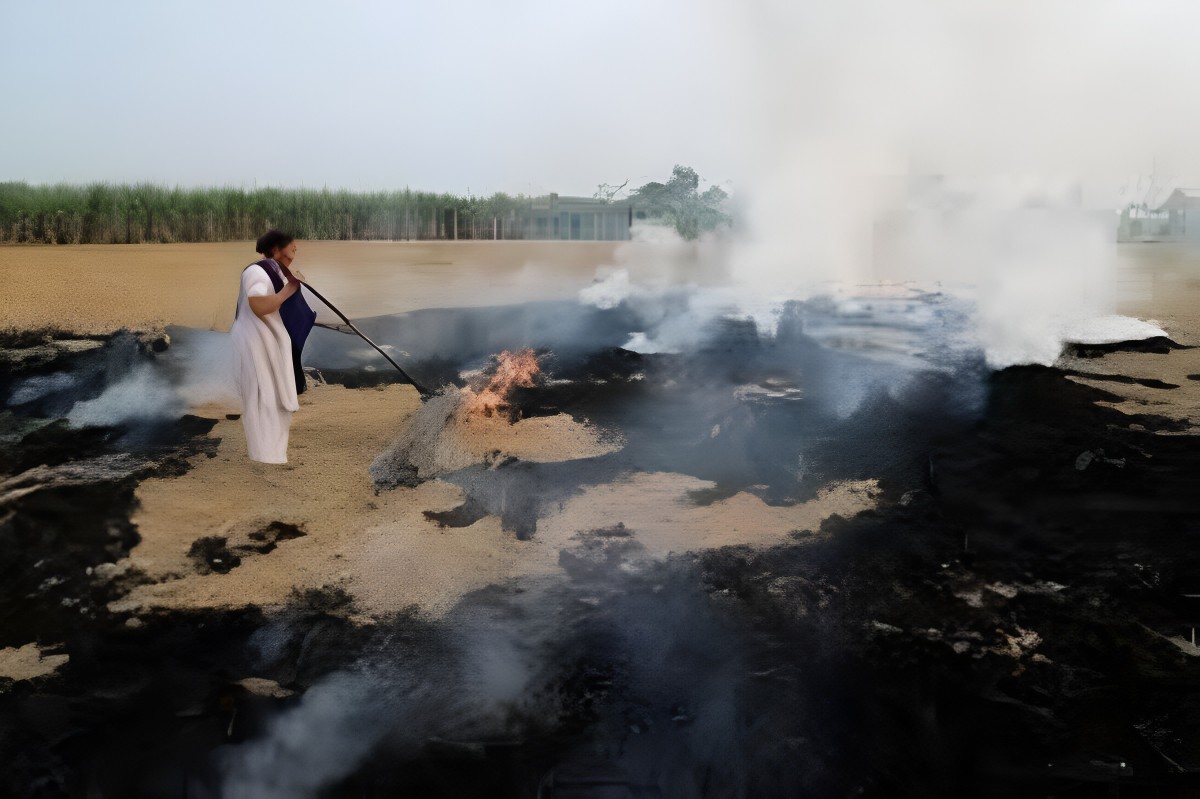Apta, also known as Bauhinia racemosa, is a species of flowering tree native to India and various parts of Southeast Asia. The Apta tree is particularly significant in the context of the festival of Dussehra, also known as Vijayadashami. Here’s a brief overview of Apta leaves and their significance on Dussehra:
Apta Leaves:
- Apta leaves are distinctive due to their unique twin-lobed shape, which resembles the symbol of Lord Ganesha, who is widely revered in Hindu culture.
- The leaves are green and have a heart-shaped appearance with two lobes that are almost equal in size.
- Apta leaves are considered auspicious and have cultural and religious significance in India.
Significance on Dussehra:
- During the festival of Dussehra, it is a common tradition in some parts of India to exchange Apta leaves as a symbol of good wishes, blessings, and respect.
- Apta leaves are exchanged to celebrate the victory of Lord Rama over the demon king Ravana, which is the central theme of Dussehra.
- In some regions, Apta leaves are used to adorn the idols of deities and also exchanged among people as a gesture of goodwill.
Also Read: अवनि लेखरा पैरालंपिक खेलों में गोल्ड जीत रचा इतिहास

Symbolism:
- The unique shape of the Apta leaf is often seen as a symbol of Lord Ganesha, who is the remover of obstacles and the god of new beginnings.
- The exchange of Apta leaves is considered a way to invoke the blessings of Lord Ganesha for a prosperous and obstacle-free future.
- It symbolizes the triumph of good over evil, which is the essence of the Dussehra festival.
Dussehra’s Cultural Tapestry:
Dussehra, also known as Vijayadashami, is one of the most significant and widely celebrated Hindu festivals in India. It falls on the tenth day of the bright half of the Hindu lunar month of Ashwin, which typically occurs in September or October. Dussehra holds great religious and cultural importance and is celebrated with enthusiasm and fervor across the country. Here’s an extended article about Dussehra:
Historical and Religious Significance:
Dussehra commemorates the victory of Lord Rama, an avatar of Lord Vishnu, over the demon king Ravana. According to the ancient Indian epic, the Ramayana, Ravana had kidnapped Lord Rama’s wife, Sita, and had taken her to his kingdom in Lanka (modern-day Sri Lanka). After a long and arduous battle, Lord Rama, along with his loyal brother Lakshmana and the monkey god Hanuman, defeated Ravana and rescued Sita on the tenth day, marking the triumph of good over evil.
Also Read: All About Cyclone Tej in Arabian Sea & Hamoon in Bay of Bengal

Celebrations and Traditions:
Dussehra is observed with various customs and rituals, which may vary from one region of India to another. Some of the common elements of Dussehra celebrations include:
- Ramlila: Ramlila is a dramatic reenactment of episodes from the Ramayana, depicting the life and adventures of Lord Rama. It is performed in the form of plays or processions in many parts of India.
- Effigy Burning: The most iconic tradition of Dussehra is the burning of effigies of Ravana, along with his brothers Meghanada and Kumbhakarna. These effigies, often made of paper and wood, symbolize the victory of good over evil.
- Worship of Goddess Durga: In some regions, Dussehra also marks the end of the nine-day festival of Navaratri, which involves the worship of Goddess Durga. On the tenth day, idols of Goddess Durga are immersed in water, signifying her departure.
- Apta Leaf Exchange: As mentioned earlier, the exchange of Apta leaves symbolizes good wishes and blessings, particularly in regions like Maharashtra.
- Processions and Fairs: Many cities and towns in India organize grand processions, fairs, and cultural events during Dussehra. These events often showcase traditional music, dance, and art.
Also Read: Dhordo Village: Where Natural Wonders and Cultural Extravaganza Meet
Regional Variations:
Dussehra is celebrated differently in various parts of India. In West Bengal, it is known as Durga Puja, a major festival where intricate idols of Goddess Durga are worshipped and immersed in rivers. In Mysore, Karnataka, the Mysore Dasara is celebrated with grand processions and cultural performances.

Cultural Significance:
Dussehra not only holds religious importance but also carries cultural and social significance. It reinforces the message of good triumphing over evil, the victory of righteousness, and the importance of adhering to dharma (duty and righteousness) in one’s life.
Dussehra is a festival of immense cultural and religious importance in India. It symbolizes the triumph of good over evil, unity, and the victory of righteousness. The celebration of Dussehra showcases the rich tapestry of Indian traditions, and its customs and rituals are a testament to the country’s diverse and vibrant cultural heritage. It’s a time when people come together to celebrate the virtues of truth, courage, and righteousness.











